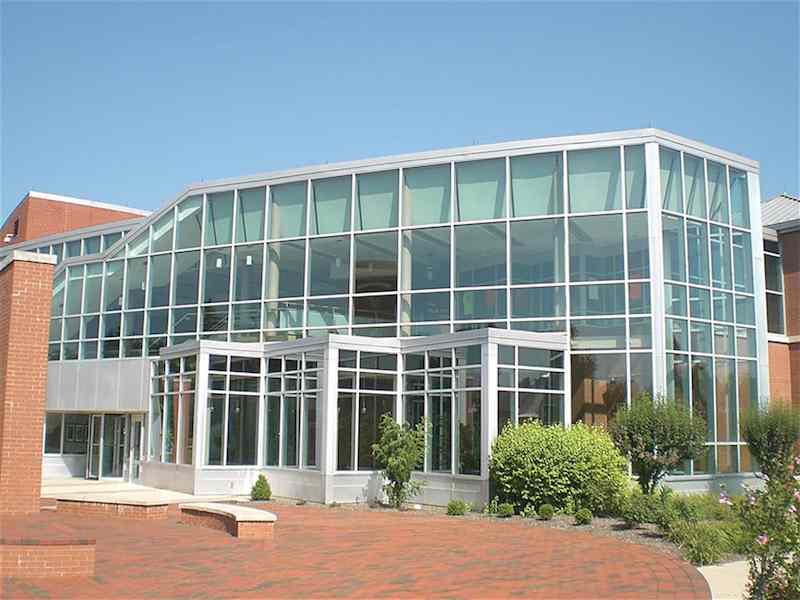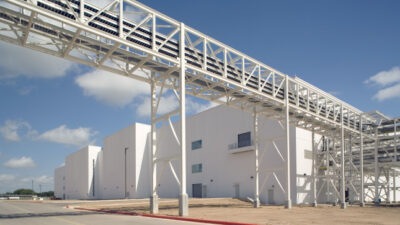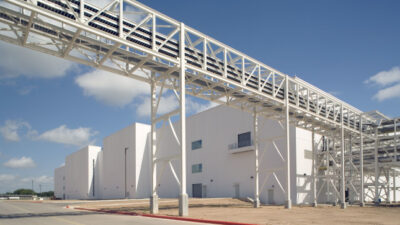Incorporating daylighting and lighting controls with a building automation system can result in energy savings.

Learning objectives
- Understand the benefits of incorporating lighting, daylighting, and building automation systems.
- Know the codes and standards that govern lighting and daylighting.
- Learn to gather and analyze data from an automation system.
Incorporating daylighting and lighting controls with a building automation system (BAS) can result in significant energy savings. There are other benefits as well, including compliance with energy codes, U.S. Green Building Council (USGBC) LEED, credits, and Energy Star.
Building owners, architects, and engineers have embraced daylighting with the advent of LEED, ANSI/ASHRAE/IES Standard 90.1-2010 and the documented benefits of daylighting for the building occupants as well as energy savings. Energy Star’s website states research has shown that daylighting not only saves money, but also improves employee productivity and product sales.
According to AEP (American Electrical Power) Energy, integrating daylighting harvesting with lighting controls can reduce a building’s overall lighting energy usage by 20% to 90%. AEP has several case studies on its website showcasing these energy savings.
Daylight harvesting refers to controlling artificial lighting in response to daylight availability to maintain a consistent light level. As natural daylight enters a space, photocontrol sensors gauge the light level and through the lighting control system, artificial light levels are reduced. Conversely, when the sun sets or on a cloudy day, the sensor will gauge the light level and with the controls, artificial lighting levels are increased. The lighting controls should be programmed with delayed on/off settings to avoid nuisance fluctuations on windy days when shifting clouds cause variations in ambient lighting.
Strategies, benefits of integration
Most BAS vendors do not offer extensive packaged lighting controls. Typically, a separate lighting controller does this task. The BAS is a useful tool to passively monitor energy usage to provide the basis for lighting controls strategies. Due to the highly customizable nature of a BAS, the designer will need to develop detailed sequences of operation for lighting controls through a BAS. Dedicated lighting controls packages have all the sequencing generally pre-packaged with BAS monitoring dry contacts. Many manufacturers of lighting controllers have the ability to network to a BAS. Some BAS are now incorporating lighting controls directly into the BAS.
What are some of the strategies and benefits for integrating daylighting and lighting controls with a BAS, either directly or indirectly?
The BAS usually controls and monitors other systems, such as HVAC and energy monitoring systems. Incorporating lighting control systems allows the facility manager and technicians the ability to control and monitor the lighting systems.
Most BAS and lighting controller manufacturers allow their systems to be controlled and monitored remotely through dedicated software and/or a Web interface. Most systems comprise a lighting controller and a BAS that are not integrated. With these systems, remote access would involve two separate systems: one for the lighting controller and another for the BAS. The two would be connected through a network.
A BAS with integrated lighting controls simplifies training, maintenance, and operations through the use of one interface. However, few integrated systems are currently available and these systems may not have as robust lighting controls compared to stand-alone lighting controllers. Consideration should be given to reviewing the pros and cons of separate systems for the lighting controller and BAS versus an integrated system.
Integrating lighting and daylighting controls with a BAS requires coordination between the lighting engineer and the BAS design engineer. Open protocols such as BACnet, LonWorks, and Modbus enable products from different manufacturers to work together. Engineers should consider specifying daylighting and lighting control products that incorporate open protocols for future expansion and retrofits.
Coordinated scheduling of lighting and HVAC loads is a way to save considerable energy. Synergies in energy savings can exist between the lighting and HVAC systems with a BAS. For example, a BAS through an occupancy sensor’s monitoring of a space can open or close the damper of a variable air volume (VAV) terminal unit. A typical scenario involves the occupancy sensor turning on the lighting in an occupied space. This is then communicated to the BAS, typically through the lighting controller or through monitoring of contacts. The BAS then opens the VAV’s damper to provide the necessary amount of heating or cooling for occupant thermal comfort. Conversely, the BAS can save energy by closing a VAV’s damper when an occupancy sensor detects a space is no longer occupied and has turned off the lighting. A detailed sequence of operations should be provided by the designer to the controls contractor when coordinating the lighting and HVAC systems.
Most lighting controls manufacturers’ hardware allows the photocontrol sensors to interface directly with lighting fixtures. This enables the sensor to directly control the artificial lighting levels without having to go through a BAS. However, the BAS can monitor the energy consumption for these lighting circuits and use this information to determine energy savings.
Digital Addressable Lighting Interface (DALI) is a standard protocol (IEC 60929 and IEC 62386) that consists of a controller with lighting ballasts, occupancy sensors, and so on. The DALI controller can monitor and control each lighting fixture through wiring between the controller and devices or between devices. Depending upon the type of DALI system, the DALI controller may be able to network with a BAS. A potential energy and maintenance management tool can exist if the specified DALI controller is programmed to track the number of operating hours for each lighting fixture as well as the number of on/off cycles per fixture. This data can be used by maintenance personnel to perform relamping as it correlates to the lumen depreciation and mean life for the lamps in each lighting fixture. Energy savings can also be calculated based on the time the lighting fixtures are off.
Controls and sensors
Proper selection and calibration of the photocontrol sensor is critical in maximizing the energy savings with daylighting harvesting. Some manufacturers have multiple sensors for different space functions. For example, an indoor photocontrol sensor is a sensor specifically designed and calibrated for interior spaces with windows. An atrium photocontrol sensor is for atriums with higher natural daylight levels. A skylight photocontrol sensor is for areas with direct sunlight exposure.
A lighting controller can automate the lowering and raising of window shades to optimize daylight and minimize glare based on the sun’s position. Daylight harvesting should also be included with this shading control strategy. The BAS can determine energy savings by monitoring the energy usage for the lighting circuits affected by the shading devices.
Occupancy sensors and photocontrol sensors can counterbalance each other. For example, an occupancy sensor can detect a person entering a private office with windows during a sunny day. If the photocontrol sensor detects that adequate daylight exists, the lighting controller can ensure that the artificial lighting in the room remains off.
If the room did not have a photocontrol sensor, the lighting controller would have turned on the artificial lighting even though there was adequate daylight. This is a good example of how an integrated daylighting and lighting control strategy can save energy.
Another benefit of integrating lighting controls with a BAS is space use. For example, a BAS that incorporates occupancy sensors can be used to determine how often certain rooms and areas are occupied. Having access to this data allows facility managers to determine if an adjustment is needed to optimize use. An example of using this data is adjusting the time-of-day lighting shutoff for a certain floor or area based on actual usage.
Consideration should be given by the designer when incorporating more complexity in a lighting strategy. The facility’s management and maintenance capabilities and associated cost to maintain the system should be included in the analysis.
Load shedding
A BAS can also save energy and money by load shedding. The BAS through the lighting controller can dim or turn off lighting to lower a building’s load during periods of high electric utility demand. Load shedding helps utility companies avoid blackouts and brownouts, and can result in utility credits or rebates for the customer.
The designer should ensure that dimmable ballasts are specified and installed when a lighting controller is programmed to dim lighting. Severe ballast damage can result if non-dimmable ballasts are used in dimming scenarios. The designer also should consider dimming or turning off lighting with load shedding in certain areas or with a certain percentage of the lighting fixtures. Communication with the facility’s operations personnel is critical in ensuring operations are maintained with the lower lighting levels in certain key areas.
Smart Grid and smart metering systems help automate load shedding. A typical scenario involves the local utility company sending an automated signal prior to an anticipated high demand period to a facility’s smart meter. The smart meter then sends a command to the facility’s BAS. The BAS through its programming can then reduce the lighting levels and lower the energy usage by the facility.
Load shedding typically has minimal impact to the building occupants when effective daylight harvesting strategies are used. Most load shedding is done during the summer months when there is sufficient daylighting, thereby minimizing the impact of reduced artificial lighting loads. This is particularly effective when a facility does not have photocontrol sensors.
Many utility companies also offer energy efficiency incentives when lighting controls and/or daylight harvesting are incorporated into a new or retrofit installation. There may be other local and state incentives as well.
Energy efficiency and LEED
LEED 2009 New Construction (NC) rewards the use of daylighting and controls. Incorporating both of these strategies contributes to energy savings and can help achieve several perquisites and credits in LEED 2009 NC:
- Sustainable Sites (SS) Credit 8: Light Pollution Reduction. A lighting controller can turn off lighting in a building between 11 p.m. and 5 a.m. Also, a controller could provide shielding of interior lighting through the use of automatic shades between 11 p.m. and 5 a.m.
- Energy and Atmosphere (EA) Prerequisite 1: Fundamental Commissioning of the Building Energy Systems. Commissioning of the lighting and daylight harvesting controls is a requirement to achieve this prerequisite.
- EA Prerequisite 2: Minimum Energy Performance. Lighting controls and daylight harvesting can reduce the amount of energy used in a building compared to a baseline system that only meets the energy code.
- EA Credit 1: Optimize Energy Performance. This credit is related to the EA Prerequisite 2 and awards 1 to 19 credits based upon projected energy reduction.
- EA Credit 3: Enhanced Commissioning. This requires a review of building operations including lighting and daylighting controls 10 months after substantial construction project completion.
- Indoor Environmental Quality (IEQ) Credit 6.1: Controllability of Systems – Lighting. This credit relates to providing individual lighting controls to a minimum of 90% of the building occupants or groups in multi-occupancy spaces.
- IEQ Credit 8.1: Daylight and Views. An Enhanced Performance credit also exists for this credit. See the LEED 2009 BD+C Reference Guide for additional details.
Version 4 is the next iteration of LEED. The USGBC announced that LEED v4 would be required for all projects registered after June 1, 2015. Projects registered before June 1, 2015, would be allowed to register for either LEED v4 or LEED 2009.
The current version of LEED (2009) uses ASHRAE Standard 90.1-2007 as the baseline for building energy performance. LEED v4 will use Standard 90.1-2010 as the baseline.
Some lighting power densities (LPD) have been changed, and lighting controls are a major focus in the 90.1-2010 Standard. The goal is to design buildings that are 30% more efficient than those designed using Standard 90.1-2004. Lighting controls present a large opportunity to save energy.
Enhanced Commissioning, EA Credit 1, with LEED v4 proposes 3 credits (compared to 2 credits with LEED 2009) for enhanced commissioning. An opportunity to achieve an additional credit includes developing an action plan for identifying and correcting operational errors and deficiencies, training to prevent errors, and planning for repairs needed to maintain performance.
LEED v4 proposes EA Credit 3, Advanced Energy Metering. This includes installation of advanced meters that can collect and store hourly, daily, monthly, and annual energy usage data using a BAS or comparable system.
A proposed EA Credit 4, Demand Response, is included with LEED v4. This provides a potential of 1 to 2 credits for installation of a load shedding system based upon the availability of a demand response program. The goal of this credit is to provide more efficient energy generation and distribution systems and to increase grid reliability as well as lowering greenhouse gas emissions.
EA Credit 6, Interior Lighting, for LEED v4 proposes to modify the LEED 2009 credit by providing at least three lighting levels or scenes (on, off, or midlevel). Midlevel is 30% to 70% of the maximum illumination level not including daylighting.
Manual or automatic glare-control devices for all regularly occupied spaces are proposed to be a requirement with EQ Credit 7, Daylight Credit in LEED v4. A potential of 3 points is proposed with LEED v4 New Construction.
Daylighting guidelines
ASHRAE 90.1-2010 incorporates several daylighting requirements. Daylight harvesting is required when sufficient daylight exists. There are specific daylighting criteria that require daylighting controls based on whether a space in question (non-retail) has primary sidelighting area of 250 sq ft or greater.
The photocontrol sensor with the sidelighting shall be capable of at least one control step of 50% to 70% of lighting power as well as another control step of 0% to 35% lighting power. Adjustments to calibrate the light sensor shall be readily accessible and remote from the light sensor location.
There are exceptions to the sidelighting controls. See Standard 90.1-2010 for more information.
Standard 90.1-2010 includes a new requirement for skylights to be installed in buildings. A minimum skylight fenestration area has been established for certain defined enclosed space types in buildings that are four stories or less and at least 5000 sq ft. Lighting controls are required with toplighting.
If the sum of the daylight area under skylights and the daylight area under rooftop monitors is 900 sq ft or greater, then the general lighting in that area shall be controlled by multilevel photocontrol. The same requirements for control steps for sidelighting exist for toplighting.
Standard 90.1-2010 also requires automatic lighting shutoff in buildings. A lighting controller’s time clock can be used to turn off lighting based upon time of day. For example, during weeknights at 6 p.m., a lighting controller can be programmed to turn off the lighting in a building.
Another requirement of Standard 90.1-2010 is the installation of at least one control device (e.g., light switch, dimmer, or occupancy sensor) for each space enclosed by ceiling-height partitions to control that space’s general lighting. At least one control step of 30% to 70% of the full lighting power is required.
Commissioning of lighting controls is a requirement within ASHRAE 90.1-2010 because it is critical that lighting controls work properly to achieve the anticipated energy savings.
The Illuminating Engineering Society (IES) has a publication, DG-29-11 The Commissioning Process Applied to Lighting and Control Systems, that provides the technical requirements for commissioning. It includes procedures, methods, and documentation requirements for commissioning lighting and control systems.
For more information on Standard 90.1-2010, refer to the 90.1-2010 definitions and the “Know the latest lighting code” article in the August 2011 issue of Consulting-Specifying Engineer magazine.
A successful BAS design that incorporates daylighting and lighting controls will help meet energy codes, help achieve LEED prerequisites and credits, save energy while maintaining appropriate lighting levels for the building occupants, and provide the facility manager with a system to collect and analyze data relating to lighting energy usage. The designer should advise the facility’s owner of the added design and implementation costs of the system against the calculated energy savings and return on investment.
Michael Chow is the founder and owner of Metro CD Engineering. He holds a BSEE from Ohio Northern University and is a member of the Consulting-Specifying Engineer editorial advisory board and a 2009 40 Under 40 winner. Julia Noschang is a mechanical engineer at Metro CD Engineering. She holds a BSME from Ohio Northern University. Noschang is involved with the Programs and Education Committee and the Emerging Professionals Group within the USGBC Central Ohio Chapter as well as the Young Engineers in ASHRAE in Columbus, Ohio.



